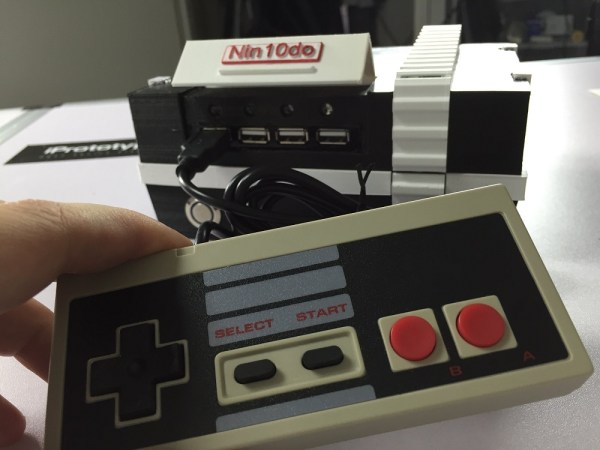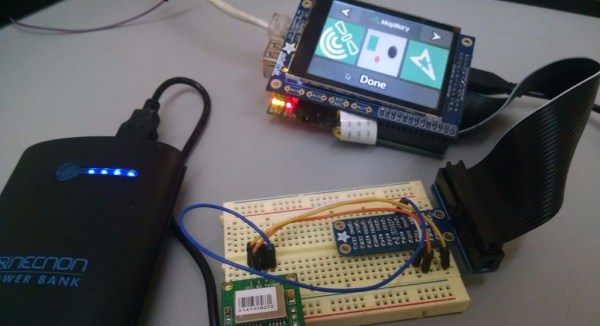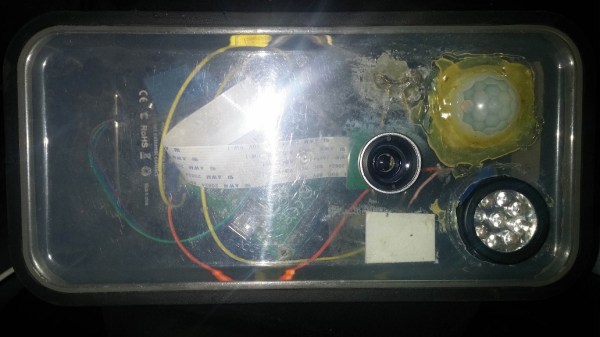If your living room entertainment area is not home to a Raspberry Pi based retro game console, you no longer have any excuses. Break out your soldering iron and volt/ohm meter and preheat the 3d printer, because you will not be able to resist making one of the best retro game consoles we’ve ever seen – The Nin10do.
It’s creator is [TheDanielSpies]. Not only did he make the thing from scratch, he’s done an extraordinary job documenting all the build details, making it easier than ever to follow in his footsteps and make one of your own. He designed the case in Autodesk and printed it out with XT Co-polyester filament. He uses a Raspi of course, along with an ATX Raspi board from Low Power Labs to make the power cycling easier. There’s even a little stepper that opens and closes a cover that hides the four USB ports for controllers. Everything is tied together with Python, making the project super easy to modify and customize to your liking.
All code, schematics and .stl files are available on his github. It even has its own Facebook page! Be sure to check out the vast array of videos to help you along with your build.
Continue reading “Nin10do Retro Game Console Stands Above All Others”


















